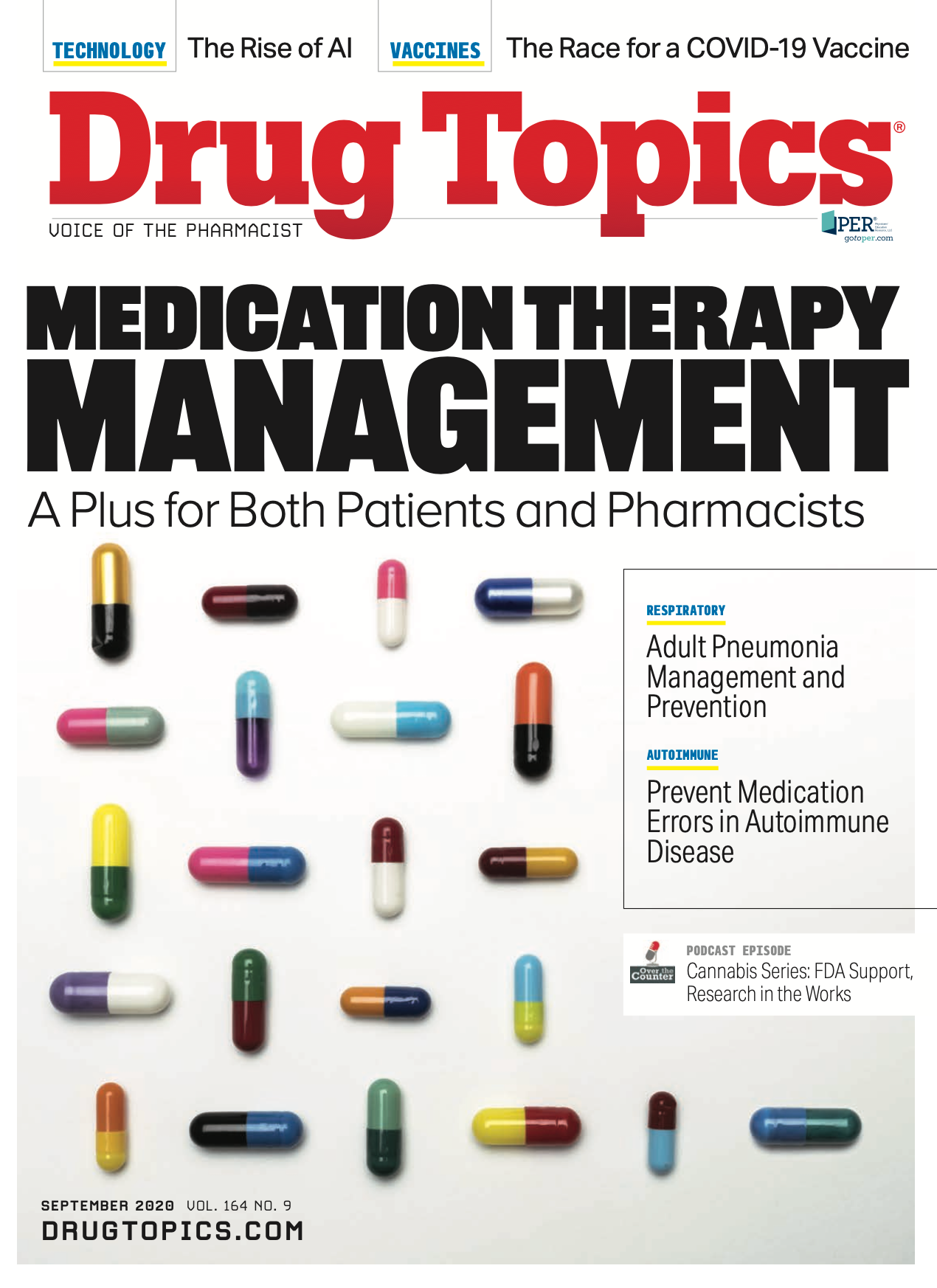Fenfluramine for the Treatment of Seizures Associated With Dravet Syndrome
On June 25, 2020, fenfluramine (Fintepla) was approved for the treatment of seizures associated with Dravet syndrome in patients 2 years and older.

Dravet syndrome is a rare and chronic form of epilepsy characterized by severe and unrelenting seizures. This debilitating disease typically manifests within the first year of life with frequent and prolonged seizures often triggered by hyperthermia, developmental delays, and other health problems.1
Initial therapy of Dravet syndrome has been limited to the use of valproate in combination with agents such as clobazam and stiripentol, with limited e cacy data in the United States.2,3 On June 25, 2020, fenfluramine (Fintepla), a Schedule IV amphetamine derivative that exhibits agonist activity at the 5-HT2 receptor, was approved for the treatment of seizures associated with Dravet syndrome in patients 2 years and older.1 Although the mechanism by which it exerts its therapeutic effect is unknown, patients treated with fenfluramine have consistently shown significantly greater reductions in the frequency of convulsive seizures than those receiving placebo in clinical trials.4
Efficacy
Two randomized, double-blind placebocontrolled clinical trials were conducted in 202 patients with Dravet syndrome between the ages of 2 and 18 years. Study 1 (N = 117) compared 3 treatment groups; 0.7 mg/kg/day of fenfluramine, 0.2 mg/kg/day of fenfluramine, and placebo, respectively, in patients on 1 to 4 antiepileptic drugs, excluding stiripentol, who were inadequately controlled. Study 2 (N = 85) compared 0.4 mg/kg/day of fenfluramine with placebo in patients inadequately controlled on 2 to 4 antiepileptic drugs including stiripentol and either clobazam, valproate, or both.
Both studies only included patients with a baseline of 6 or more convulsive seizures over 6 weeks, and observed a primary efficacy end point of a change from this baseline, per 28 days, during the 14- or 15-week treatment periods.5 In both studies, the reduction in frequency of convulsive seizures was significantly greater for all dose groups of fenfluramine, compared with placebo. This reduction was seen within 3 to 4 weeks of starting fenfluramine, and the eff ect was seen throughout the duration of both studies. The majority of patients using all doses of fenfluramine experienced a 50% or greater reduction in monthly convulsive seizures.
Safety
Fenfluramine has a boxed warning for valvular heart disease and pulmonary arterial hypertension. Fenfluramine is only available under a risk evaluation and mitigation strategy and requires an echocardiogram assessment prior to initiation of therapy, frequently throughout, and after therapy.1 Furthermore, 37% and 19% of patients in clinical trials reported decreased appetite and decreased weight, respectively.5 Fenfluramine is associated with sedation, suicidal ideation, hypertension, and glaucoma.4,6 This medication is contraindicated in patients with concomitant use, or use within 14 days of, monoamine oxidase inhibitors due to the increase in risk of serotonin syndrome. Fenfluramine should be gradually titrated to discontinuation to minimize the risk of a rebound in seizure frequency and status epilepticus.5
Dosing and Administration
Fenfluramine is administered as an oral solution with or without food and is dispensed as a 2.2 mg/mL (360 mL) vial with 2 oral syringes. Initial dosing for both pediatric and adult patients begins at 0.1 mg/kg/dose twice daily and can be titrated on a weekly basis up to 0.2 mg/kg/dose, and then 0.35 mg/kg/dose twice daily, based on response and tolerability. The maximum recommended dose for adult and pediatric patients is 26 mg/day and 13 mg/day, respectively. The labeling does not provide dose adjustments in renal impairment, and use is not recommended in hepatic impairment. Of note, these dosing recommendations are for adults without concomitant stiripentol therapy and for pediatric patients 2 to 18 years old on at least 1 other antiepileptic drug.6,7
References
1. FDA approves new therapy for Dravet syndrome. News release. FDA; June 25, 2020. Accessed July 28, 2020. fda.gov/news-events/press-announcements/fda-approves-new-therapy-dravet-syndrome
2. Tanabe T, Awaya Y, Matsuishi T, et al. Management of and prophylaxis against status epilepticus in children with severe myoclonic epilepsy in infancy (SMEI; Dravet syndrome)—a nationwide questionnaire survey in Japan. Brain Dev. 2008;30(10):629-635. doi: 10.1016/j.braindev.2008.03.002
3. Aras LM, Isla J, Mingorance-Le Meur A. The European patient with Dravet syndrome: results from a parent-reported survey on antiepileptic drug use in the European population with Dravet syndrome. Epilepsy Behav. 2015;44:104-109. doi: 10.1016/j.yebeh.2014.12.028
4. Fintepla. Package Insert. Zogenix, Inc; 2020. Accessed July 28, 2020. zogenix.com/pi/Fintepla-prescribing-information.pdf
5. Zogenix, Inc. Clinical Efficacy. Accessed July 19, 2020. finteplahcp.com/efficacy-clinical-trials/
6. Lexicomp: Lexi-drugs online. Fenfluramine. Updated July 21, 2020. Accessed July 21, 2020. online.lexi.com. Subscription required to view.
7. Fintepla (fenfluramine) oral solution, C-IV. Medication Guide. Zogenix, Inc; June 2020. Accessed July 28, 2020. zogenix.com/mg/Fintepla-medication-guide.pdf
